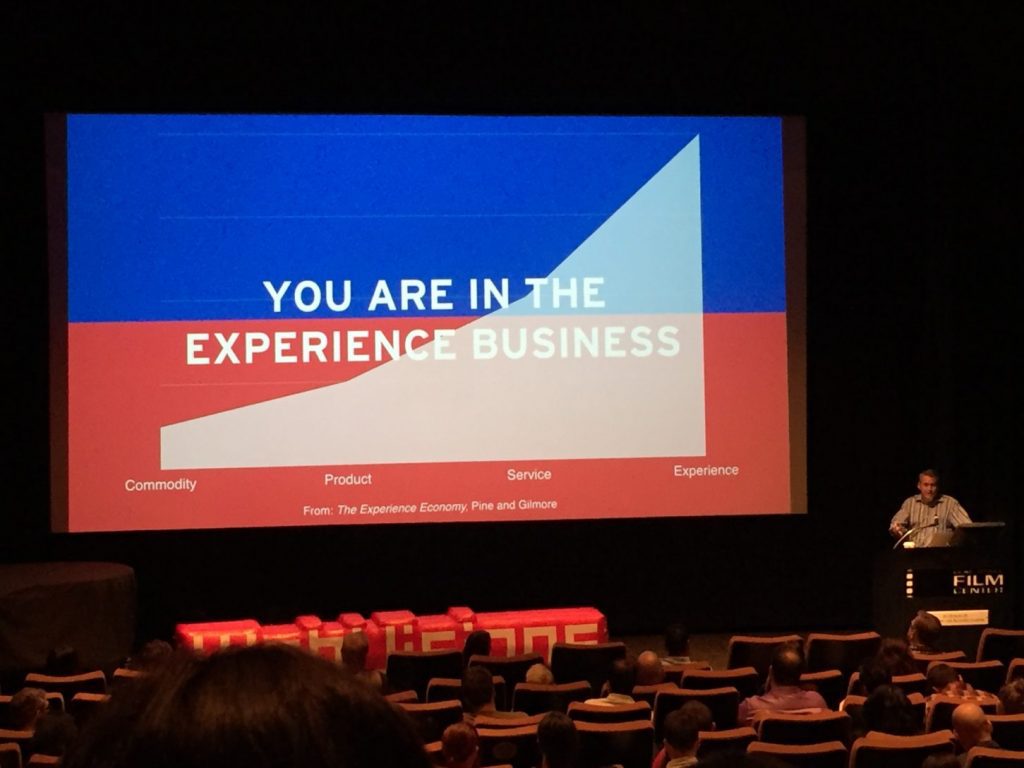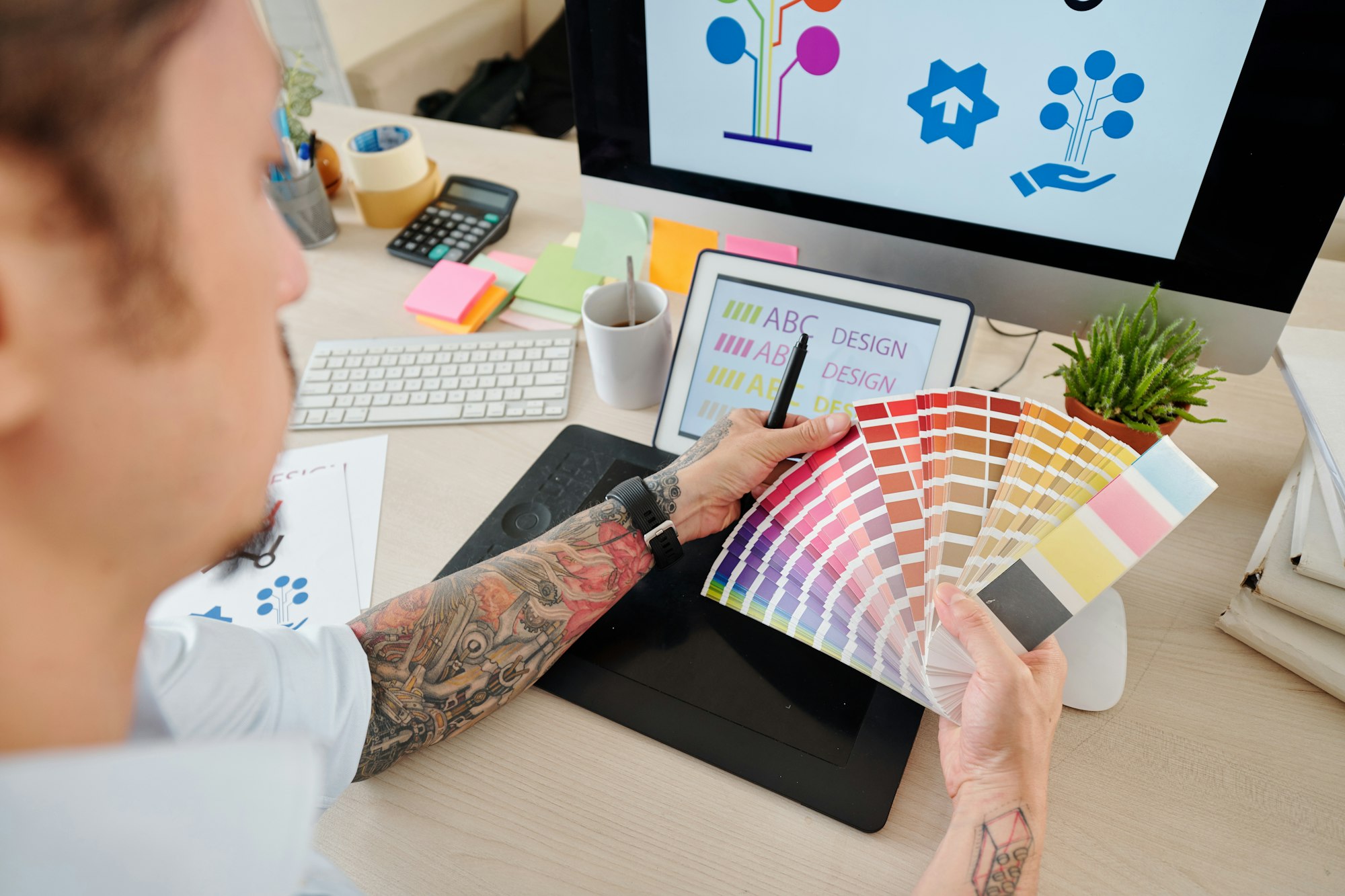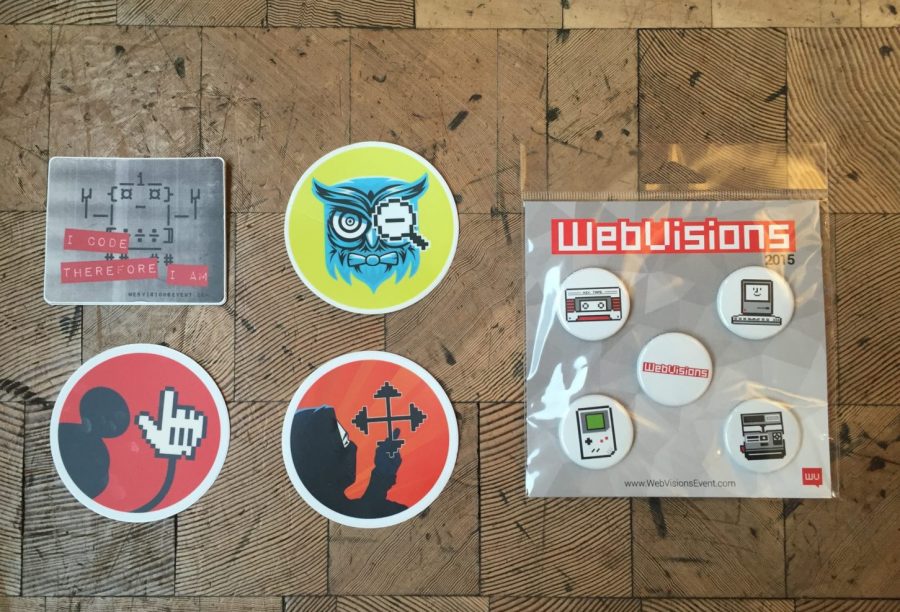
Learning New Things: WebVisions Chicago
It doesn’t seem to matter how old I get: I still love to learn. And although I’ve been honing my craft at Matchbox for the past four years, it’s still incredibly important to stay up on the latest in the field. And it’s equally important to break away from the day-to-day, and see something new or get a fresh perspective. That’s how I found myself at WebVisions Chicago last week. The conference gave me the opportunity to not only hear personal stories and new points of view from creatives in and around design but also to explore the city of Chicago, a first for me (terrible, I know!).
Day 1
Wednesday started with a train ride and ended with a pizza.
The Webvisions Chicago conference started with a series of workshops on Wednesday, but for me, it was a day of travel, so I could make the 6-hour train ride from St. Louis to Chicago. It had been a long time since I had been up quite so early, and there was something about seeing the world at dawn that already left me feeling more creative and inspired.
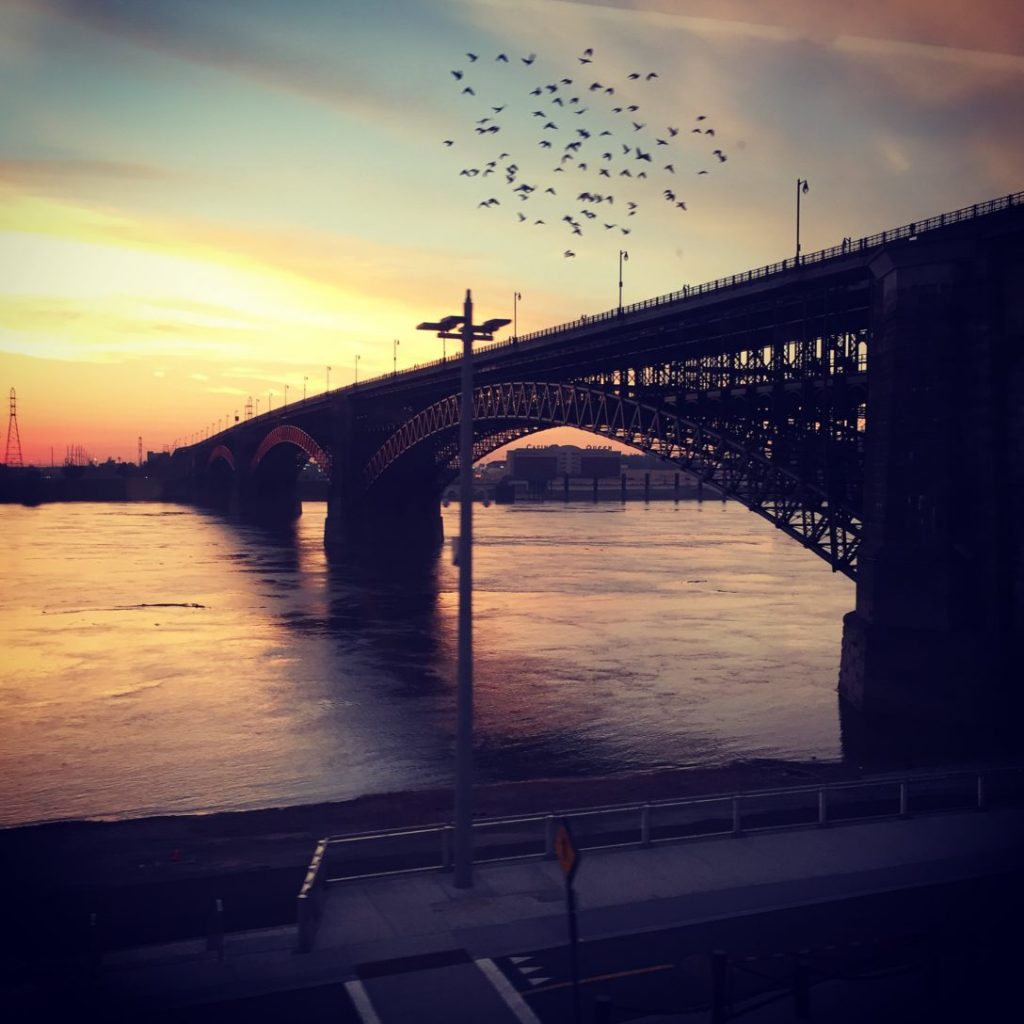

What I Learned #1
Routine leaves little room for creativity. Surprise yourself sometimes and good things will result.
Now I won’t bore you with the details of a six-hour train ride, except to say that this was also a first for me (I know, I know…), so I found it interesting and exciting for almost two hours. Inspiration can come from anywhere.
When we arrived in Chicago, the husband and I opted to walk the streets to the hotel in lieu of a taxi or Uber. This gave us a chance to see the city and stretch our legs a little. One of the awesome things we noticed on our walk was that Chicago still has a lot of street art and advertisements on the sides of buildings.
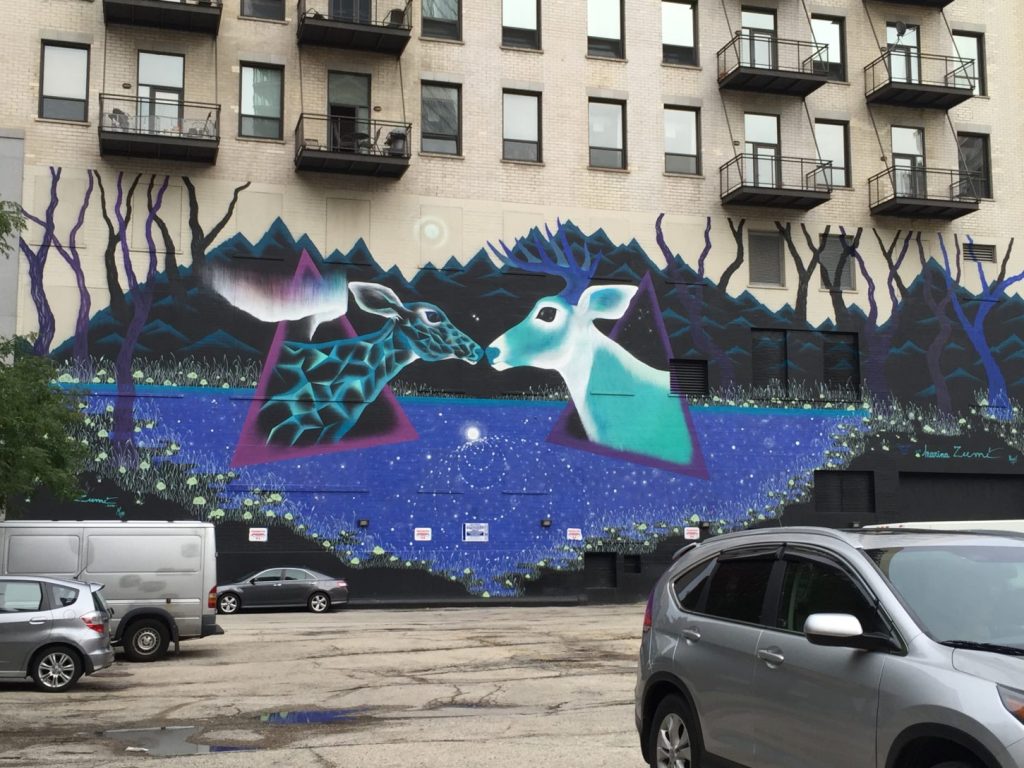
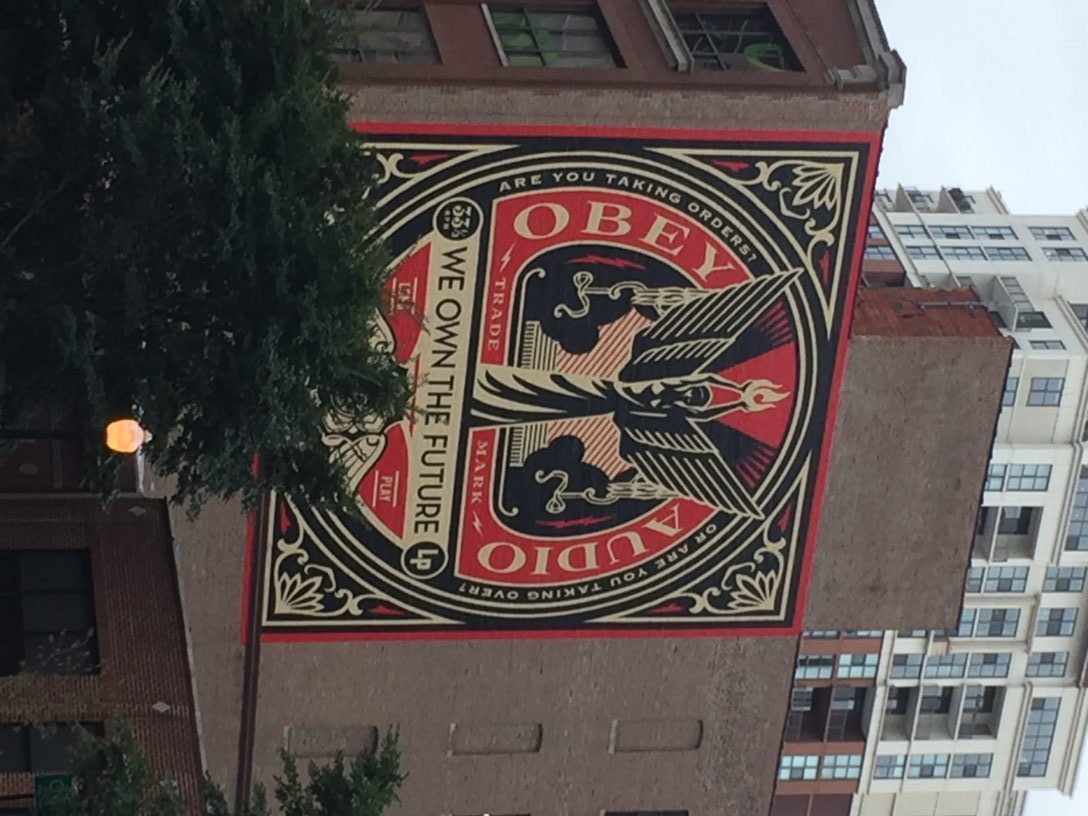
Most of the rest of the day was spent relaxing and preparing for the conference, but before we retired for the day we had to (it’s a requirement!) go get a deep-dish pizza at Giordano’s.
What I Learned #2
One slice of deep-dish pizza is roughly the equivalent of a whole 12-inch pizza at Imo’s.

Day 2
Thursday started with a lanyard and ended with the cosmos.
A good morning starts with a good breakfast and Yolk did not disappoint.
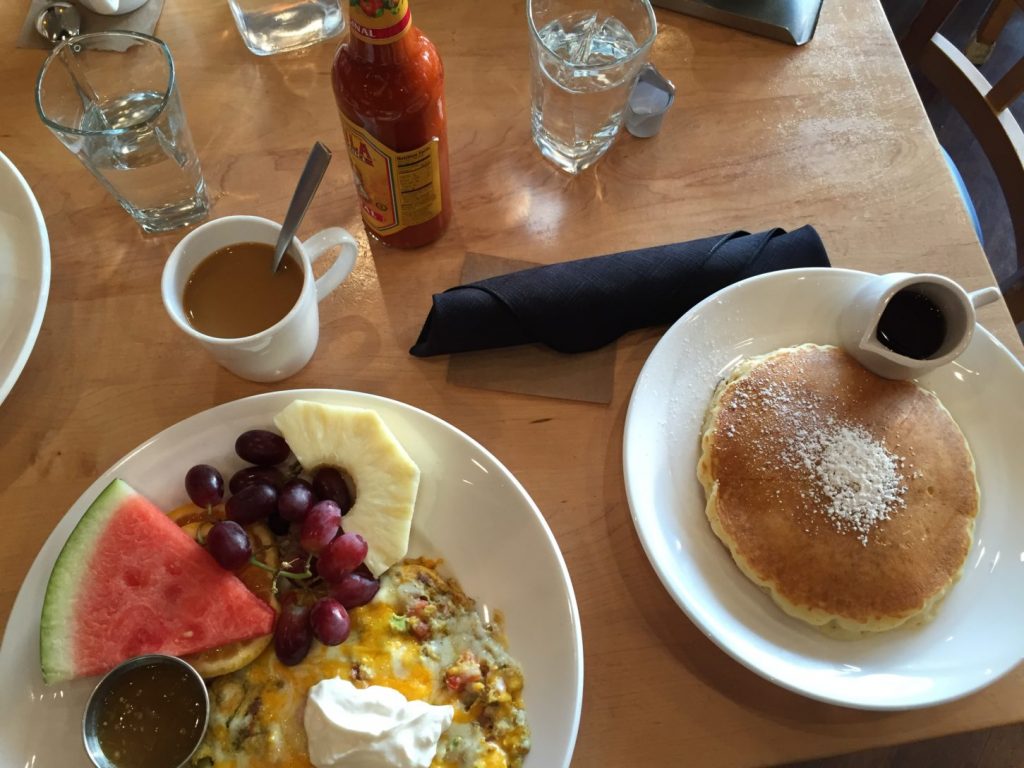
After breakfast, I made the bustling early-morning walk to the Gene Siskel Film Center for the first day of speakers at WebVisions. We were given lanyards and the schedule for the day and shuffled into one of the theaters for a day full of presentations. Here’s what I learned:
Make Your Own Rules – Jessica Walsh

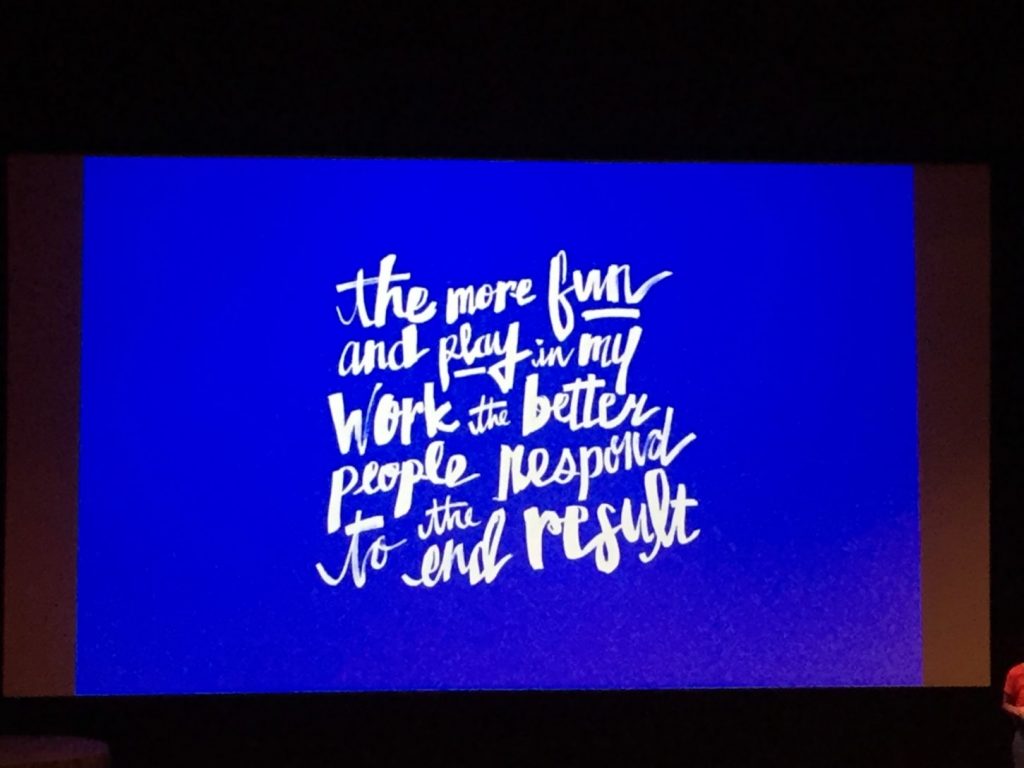
“Play” is an important part of design and creativity. Jessica encouraged us to find our flow state, the place where you are in the zone and feel endlessly creative, and gave us these tips on how to get there:
- Have Confidence – especially the confidence to fail. Take risks!
- Give yourself plenty of time to work on a project.
- Space away. Take breaks – get away from the work.
- Humor – Liberates the brain. Enjoy the project!
She also talked about the importance of setting constraints, even in a project where you aren’t given many. When you are given a blank canvas, often your ideas are spread out and unrefined, but using constraints puts forth a challenge and forces you to think even more creatively.
Her final pieces of wisdom: “Make less pretty crap. Make more stuff with heart, soul, and voice.”
Creative Leadership: The Value Design Brings to Business – Nathan Shedroff

Nathan spoke about the conflict between the minds of business and the minds of design and how we should find a way make the case for design to result in better business products. Business and design are often at odds because business leaders think of the quantitate outcomes a product will generate (functional, financial) and designers think of the qualitative aspects (emotional, identity, meaningful). But studies have proven qualitative aspects have a more lasting impression on consumers, so we should strive to make design a leading business decision.
Practical Creativity – Dan Saffer

It’s not always easy to be creative. Sometimes we get really stuck and sometimes we fail. Dan talked about ways to form a creative habit and ways to beat designer’s block including reading books, keeping a list of big questions so your brain is always working, and taking a walk to see something new and recharge. He encouraged us to “Create a bag of lenses. You want different ways to look at the world.” And “If the task is boring, make the way you do the task interesting.”
Design Anthropology 101 – Ameline Lamont
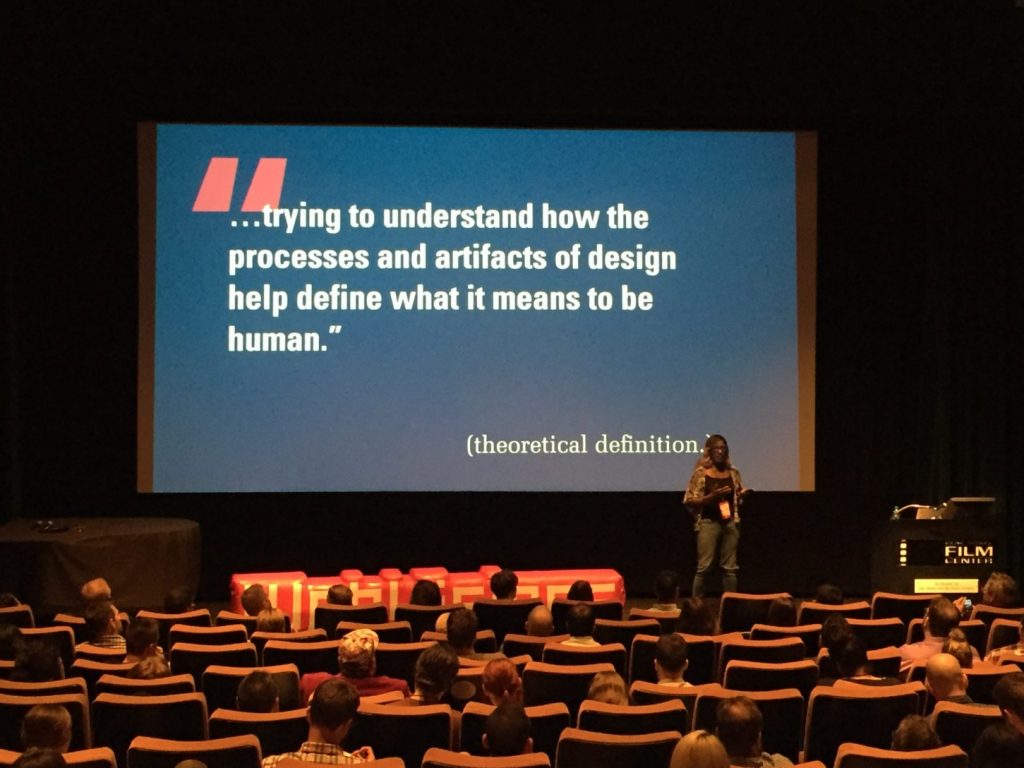
It’s easy to design for designers because we understand the power and intent of design. It’s harder to design for others. Ameline talked about her role as a design anthropologist, and how important it is to include in-depth user testing to learn the stories behind the design.
Difference Between Being Cute & Creepy is One Emoji – Timothy Goodman
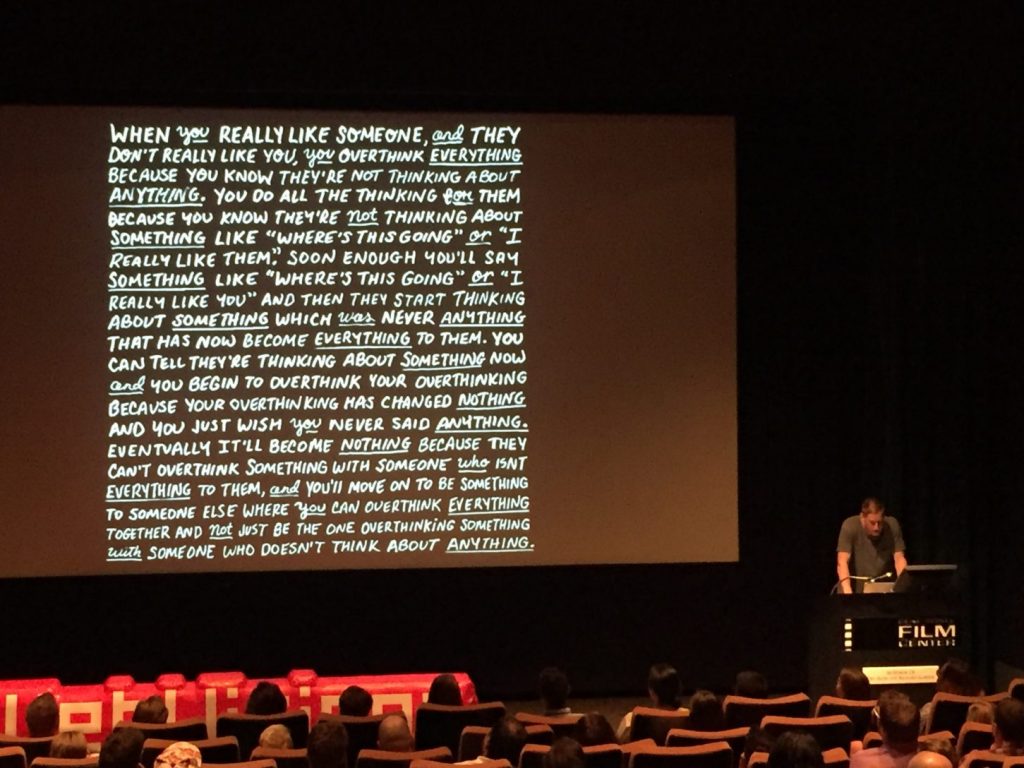
Tim encouraged us make our work more meaningful by keeping in mind the following:
- one: we all have issues
- two: vulnerability
- three: unexpectedness
He also argued that the work we do for our clients is incredibly important, but sometimes it overwhelms us and we forget to take the time to do something creative just for ourselves: “For everything you do for them, do one for yourself.”
Hello from the Other Side – Adapting the Agile Agency to Clients’ Realities – Christian Titze
Endenspiekermann is a design agency founded by influential German typographer and designer, Erik Spiekermann. Christian introduced us to their agile processes and how they “build a great experience, by putting people in the center of what [they] do.” Because projects these days are constantly changing, cross-platform, and utilize a team that’s interdisciplinary, the agile method makes it easier to be flexible and keep clients happy. Designers and developers work side by side and they keep the process moving by setting release dates for features, not entire projects. Clients have access to the project constantly and see it as each feature is released.
Tall Tales from a Large Man – Aaron Draplin
It’s often hard to think of design without thinking about design programs like Photoshop and Illustrator and working on the computer. Aaron encouraged us to start with the basics, though: listen, think, take notes, draw. When it came to refining, he reminded us that “Vectors are free.” There’s nothing stopping you from creating multiple versions of a logo or a design in order to get it right. You can and you should. He also told us that sometimes you need to get away from the big names in design and “Be sure to dig into the unsung heroes of design.” There is so much inspiration that can be drawn from unknown logos and designers you stumble across in the real world. It doesn’t have to be famous to be inspirational. He concluded by telling us that we might face criticism constantly, or have trouble with this or that project but we have to remember the cosmos. We’re small. Everything is small. When you’re dealing with a problem, remember we’re on a tiny planet in the middle of an endless universe of possibilities.
Day 3
Friday started with swag and ended with a focal point.
Now when the conference leader tells you if you come early, you’ll get cool swag, you get to the conference really early. And you do get cool swag.
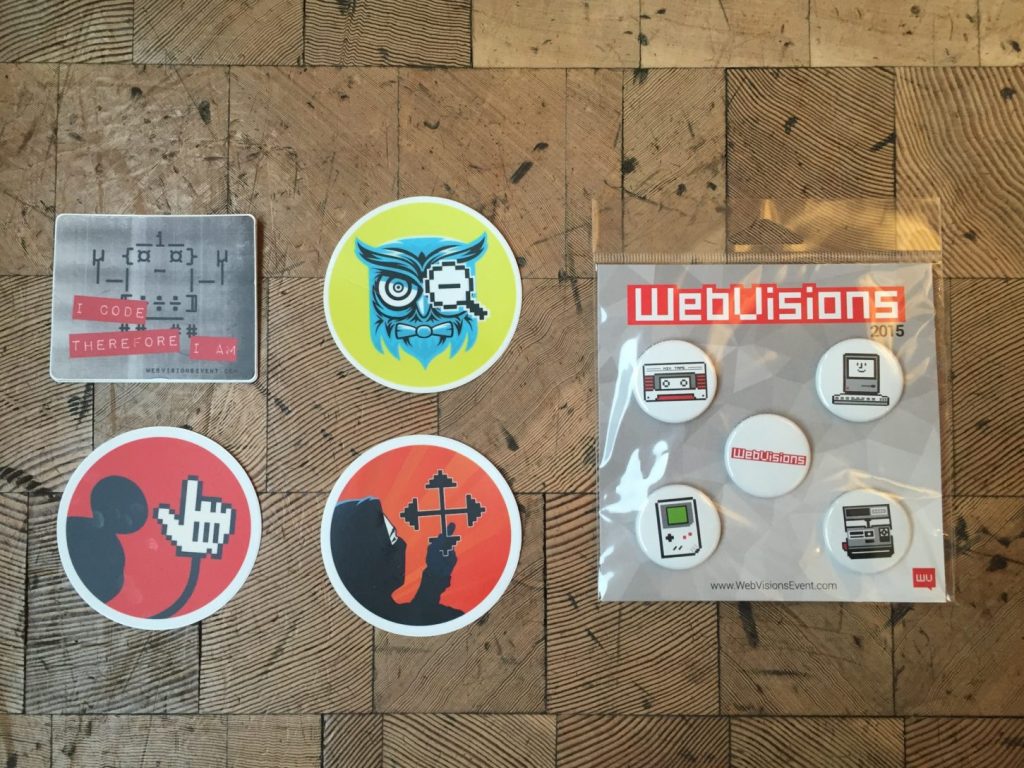
Here’s what I learned on day two:
What Does a Roll of Toilet Paper Have in Common with Product Design – Noam Almosnino
It’s hard not to try to perfect every detail of a project before you show it to anyone. Perhaps, because we’re afraid of harsh criticism. Noam introduced us to using the improv concept of “yes/and” to move an idea forward without dismissing it completely at the get-go. He also talked about prototyping and how a prototype should be rough, not flawless. And how we should “Clear our assumptions to make room for new ideas.” Oftentimes we assume we know everything about a familiar product, but really we should start at the very beginning and search for ways to improve it or as Noam said, “Unlearn to learn.”
Scaling the Concierge Experience (Conversations with Machines) – Nathan Clinton
Modern technology has introduced the bot into our daily lives. From Siri to Alexa, bots are meant to help make our lives easier. Nathan touched on the language gap between humans and bots, and how we will always struggle to bridge that gap because of the depth of human language. He said, “Language is not just a collection of words.” It changes based on tone, body language, and the people communicating. This makes it difficult to impossible for a computer to effectively communicate with us.
Designing for Sustainability: A Guide to Building Greener Digital Products and Services – Tim Frick
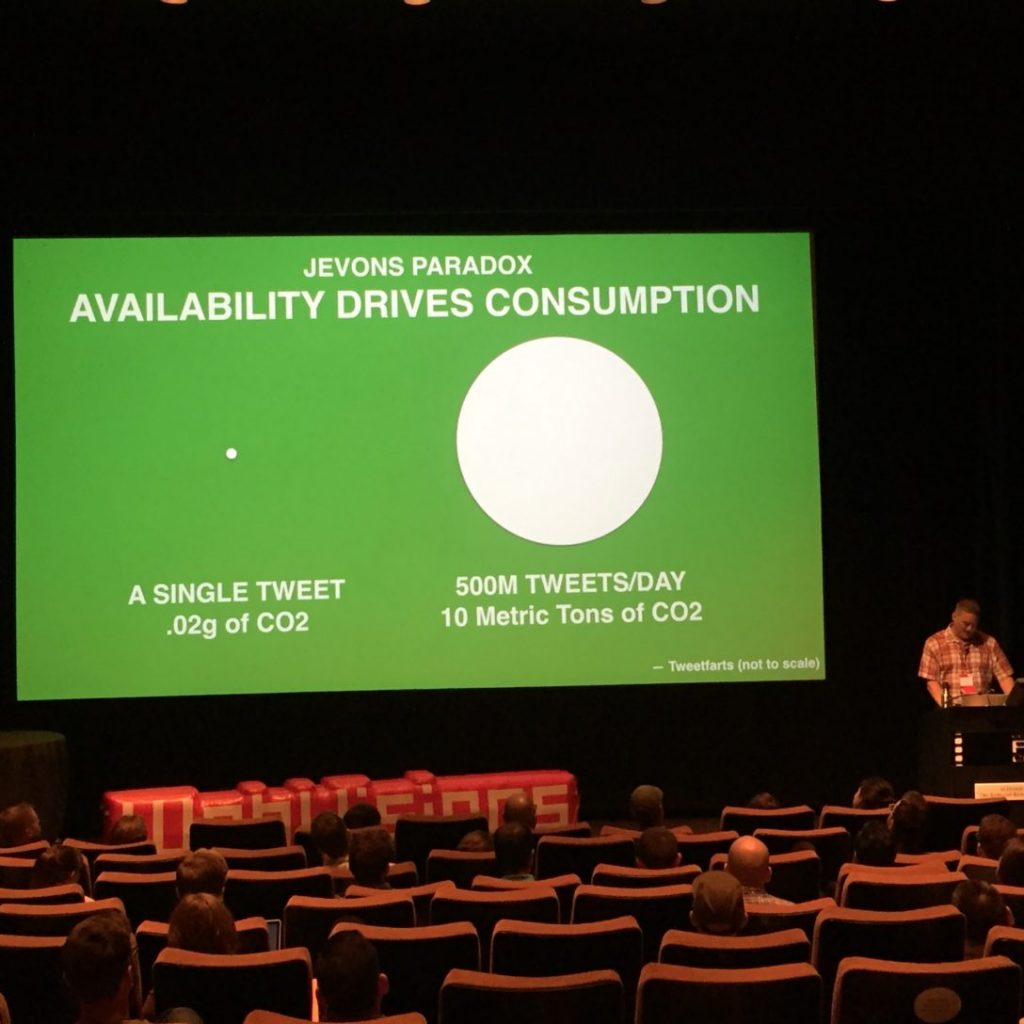
1 billion metric tons of CO2 are released a year from internet and media functions. That was one of the statistics Tim opened with to discuss the importance of sustainable web design. What can we do? We can use good CTAs and have good content on our sites, think mobile first, and set page weight budgets. Tim also recommended talking to large companies that don’t use green hosting or don’t practice sustainable design.
Chicago Sights – Lunchtime
I decided to take a quick lunch break so I could get back to the conference early and finish typing up some notes from the speakers. On my way back, I shot a quick photo of the famous Chicago theatre. Just so happens, the Gene Siskel Film Center is right across the street from it!
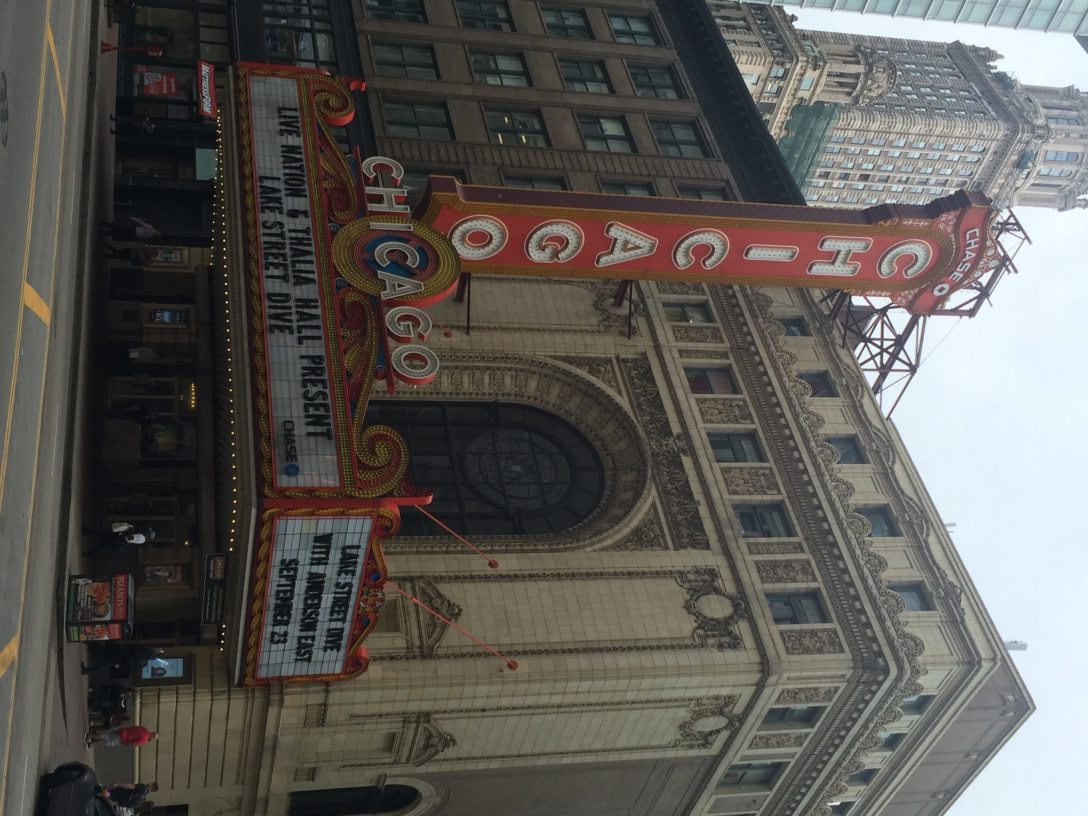
This is where the magic happens:
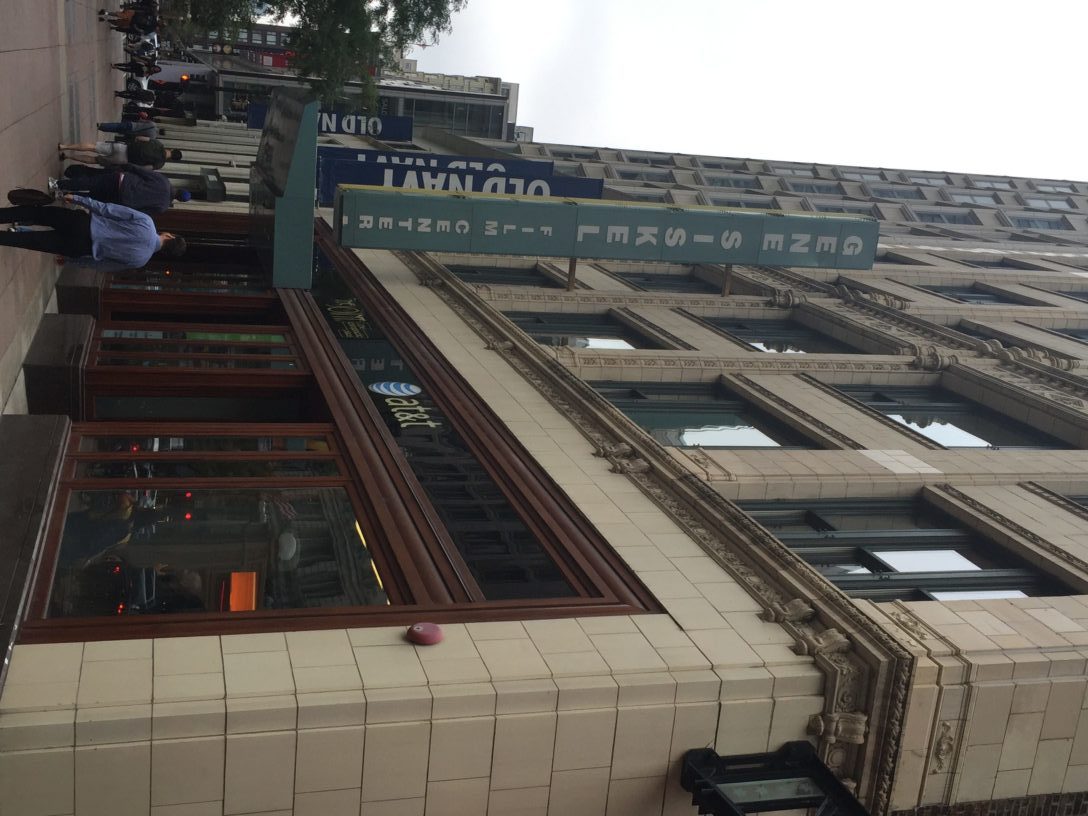
Back to the WebVisions Chicago conference!
Fonts. Everything is Changing. Again. – Thomas Phinney

With the web becoming more responsive and flexible, it’s always been a struggle for fonts to keep up. Having multiple fonts increases load time, so you have to find a balance between a design aesthetic and keeping your site light. Luckily, there is a new font system in the works called OpenType Font Variations or Variable fonts. Thomas said there are two things to note about variable fonts:
- Compression for a whole family is up 70%ish
- Uses design axes (hence the variable/variations)
This will give designers the flexibility to use multiple fonts with low load times and keep moving the web towards a more flexible future.
The Secret Lives of Drones – Ciara Taylor
Activism x Technology – Antonio Garcia
We don’t often think of the power we have as individuals, especially individuals in the web industry. Antonio made a plea for us to start creating action platforms instead of relying on social networks to create activism. The spread of false information on social networks is rampant and often people who declare support online are less likely to donate to the cause later, so the effects of activism are lessened. He said we should work towards creating places to have real debates and meaningful conversations on the web. Although we can use technology for good, he still concluded, “Technology doesn’t change the world. We do.”
Jim Coudal interviews Jason Fried about the Future of Web – Jason Fried
Our world is full of distractions and it’s all too easy to get wrapped up in them. Jason discussed the creation of Basecamp and how the new features they’re rolling out help rid us of the constant desire to bounce back in forth and disrupt our workflow. One of Basecamp’s latest features is the “work can wait” feature. It allows you to only get notifications from Basecamp within your set work hours to prevent you from logging in after hours. Jason also talked about the importance of preventing chat systems from being up on your screen constantly. The notifications keep you bouncing back and forth and reduce your focus. He said that although his company is scattered and several employees work remotely, they make it a focus to ‘meet up’ on Basecamp and share one thing they worked on or learned.
Goodbye Chicago!


I learned a ton at the Webvisions Chicago conference: the future of robots and drone technology, the importance of play in design, the power of technology in activism, and more. It’s helped me see things in a different light and I learned new skills I can apply to my work here at Matchbox. Next week is St. Louis Design Week. Wonder what I’ll learn then?
[cta-button background_url=”https://matchboxdesigngroup.com/wp-content/uploads/2021/11/FullSizeRender-1.jpg” title=”Start Designing” button_text=”Learn More” url=”https://matchboxdesigngroup.com/contact-us”]
